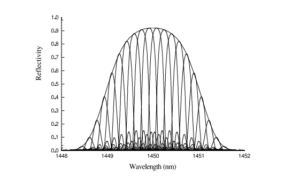Seismic techniques are the main techniques for the characterization of subsurface structures and stratigraphy. Borehole technology system provides the highest resolution characterization and most precise monitoring results because it generates a higher signal to noise ratio and higher frequency data than surface seismic techniques. A new generation of fiber optic borehole sensor systems has been developed based on all fiber optic data transmission and fiber optic sensor technologies. The new fiber sensors are much more sensitive and are able to record much larger bandwidth data with better vector fidelity than is possible with current seismic sensor technologies. The new sensors also can operate in most hostile environments found in boreholes such as pressure and temperature conditions. This improvement in data quality and density will generate better images and more precise monitoring results, which will allow a much improved high-resolution interpretation and ultimately better oil and gas production.
Since the borehole seismic system does not require electric power for either the optical sensors or the hydraulically operated deployment system, the entire system is intrinsically safe. The fiber-optic seismic sensor system measures the strain of the fiber between two Fiber Bragg gratings surrounding the mandrel using an interferometric measurement technique comparing the phase angle between two spaced reflections from the same light pulse traveling in the fiber. It is using a time-division multiplexing technique to transmit the dynamic fiber strain information to the interrogators. This allows the measurement of extremely small strains in the fiber. The fiber optic seismic sensor is self-standing to electric and electromagnetic interference in the borehole since the system does not require any electronics at the fiber optic sensor end. This design also makes the fiber optic seismic sensor extremely robust and able to operate in extreme environments such as temperatures up to 300 C. All the sensors are calibrated so the optical output amplitude into absolute acceleration can be mapped. The sensors have also proved to be about 100 times more sensitive than the regular coil geophones that are used in borehole seismic systems today.
Optromix Company manufactures a wide range of sensors, that are able to feel the slightest deformation of the structures.


 Fiber Bragg Gratings is one of the most meaningful developments in the areas of optical fiber technology, due to their flexibility and unique filtering performance. FBG is defined as the key component in dense wavelength division multiplexing on the basis of their low insertion loss, high wavelength selectivity, low polarization dependent loss, and low polarization modal dispersion.
Fiber Bragg Gratings is one of the most meaningful developments in the areas of optical fiber technology, due to their flexibility and unique filtering performance. FBG is defined as the key component in dense wavelength division multiplexing on the basis of their low insertion loss, high wavelength selectivity, low polarization dependent loss, and low polarization modal dispersion.